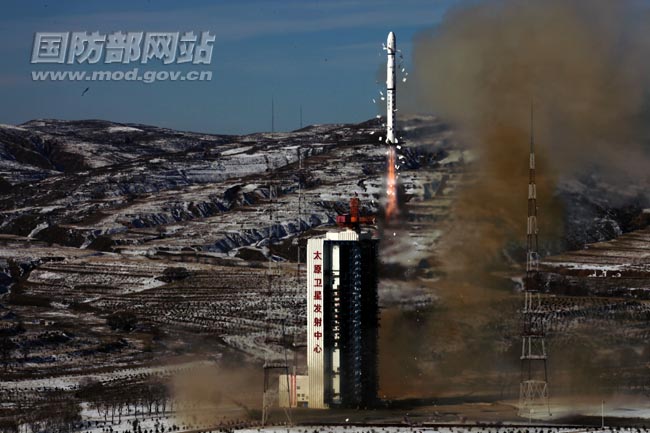China Lofts New Satellite, Breaks US Rocket Launch Record

For the first time since the dawn of the space age, China's Long March rocket family eclipsed the annual flight rate of the U.S. fleet of space launchers Thursday with the successful deployment of a high-resolution mapping satellite.
A Long March 4B booster lifted off at 0326 GMT Thursday (10:26 p.m. EST Wednesday) from the Taiyuan launching base in Shanxi province, according to the state-run Xinhua news agency.
The 150-foot-tall rocket released a Ziyuan remote sensing satellite into orbit 13 minutes later, according to the Chinese defense ministry.
Chinese officials said the mission was flawless, marking the country's 18th successful space launch in 19 tries this year. The United States is 17-for-18 with flights of the space shuttle and the Atlas, Delta, Taurus and Minotaur rocket systems.
No more space launchings are scheduled from China or the United States this year.
China's mark of 19 satellite blastoffs also sets a record for the Chinese space program. The previous high for Chinese launches in a year was set last year with 15 flights. [Spaceflight Now Gallery: China's Last 2011 Rocket Launch]
U.S. launches this year completed construction of the International Space Station and deployed scientific probes to Jupiter, the moon and Mars. Chinese rockets sent more commercial payloads into space than the United States, and they launched two spaceships for the country's historic first docking in orbit, laying the foundation for a manned flight next year.
Get the Space.com Newsletter
Breaking space news, the latest updates on rocket launches, skywatching events and more!
Russian and Ukrainian launchers have lifted off 33 times this year, but three of those missions ended in at least partial failures. Those numbers include two Soyuz flights from the European-owned spaceport in French Guiana, and a Zenit rocket mission from the commercial U.S.-based Sea Launch platform in the Pacific Ocean.
The Ziyuan 1-2C satellite launched Thursday is flying 478 miles above Earth with an orbital inclination of about 98.5 degrees, the defense ministry said in a posting on its website.
The 4,630-pound spacecraft was developed by the China Academy of Space Technology and is the country's first high-resolution remote sensing satellite, according Xinhua.
But secret spy satellites can likely produce sharper images.
Ziyuan 1-2C carries black-and-white and color cameras to provide officials with imagery for land resource surveys, disaster relief services, agriculture development, forestry, water conservation, environmental monitoring, city planning and other applications, according to Xinhua and the Chinese defense ministry.
The defense ministry said on its website that China will launch more than 20 satellites in 2012 to "further promote the development of the aerospace industry, national scientific and technological progress and economic development."
Missions next year include the launch of at least one human space mission to manually dock with Tiangong 1, a prototype orbital laboratory designed to test technologies for a Chinese space station.
Copyright 2011 SpaceflightNow.com, all rights reserved.
Join our Space Forums to keep talking space on the latest missions, night sky and more! And if you have a news tip, correction or comment, let us know at: community@space.com.
Stephen Clark is the Editor of Spaceflight Now, a web-based publication dedicated to covering rocket launches, human spaceflight and exploration. He joined the Spaceflight Now team in 2009 and previously wrote as a senior reporter with the Daily Texan. You can follow Stephen's latest project at SpaceflightNow.com and on Twitter.










